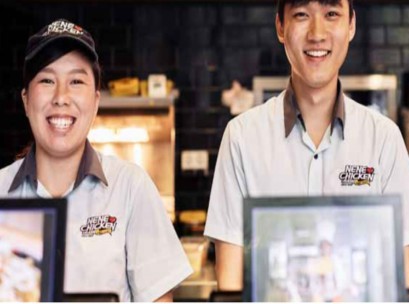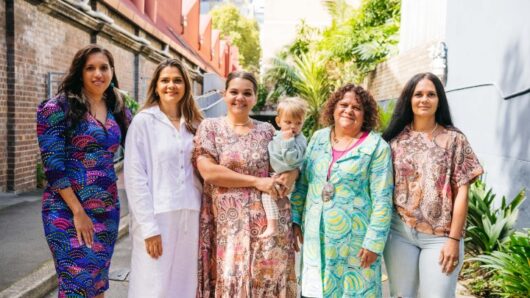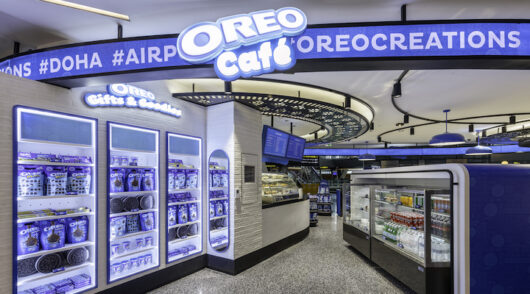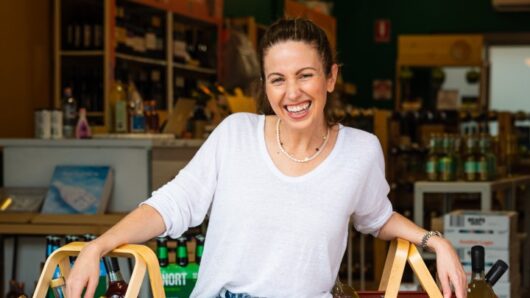 With its farm-to-fork ethos and walls covered in distressed wood, the 4Fingers Crispy Chicken restaurant on Bourke Street in Melbourne easily blends in with the city’s many hipster cafes. Walking past the industrial exterior, few would guess that the Singaporean chain is new to the Australian food scene.
With its farm-to-fork ethos and walls covered in distressed wood, the 4Fingers Crispy Chicken restaurant on Bourke Street in Melbourne easily blends in with the city’s many hipster cafes. Walking past the industrial exterior, few would guess that the Singaporean chain is new to the Australian food scene.
In fact, the inaugural store opened its doors in Melbourne just two weeks ago. 4Fingers opened a second location at Westfield Chermside in Brisbane on June 22 and plans to open a third in Brisbane’s CBD on 7 July.
This pace is par for the course for the chicken chain, which has also entered Malaysia and Indonesia, while growing revenues across its Singapore outlets from SGD$2 million to SGD$30 million (forecast) over the last four years.
“With our first three stores in Australia opening in a span of one month, we are gunning for growth with further expansion plans on the cards,” 4Fingers’ CEO Steen Puggaard told IRW.
Puggaard said the Australian market is a good fit for the thriving chain, because “people are showing signs of brand fatigue, and are hungry for new, better options”.
“What we have to offer on our menu is unique and not like your typical fast food chain or cookie cutter fried chicken joint. For example, our freshly baked burger buns, kimslaw [kimchi coleslaw] that’s fermented in-house, Chinese-style mantou buns and our famous chips in seaweed or kimchi flavours, add to our Asian-inspired menu.”
Indeed, Asian-inspired menus are having a moment right now, as evidenced by the wave of overseas eateries setting up shop in Australia. Consider the recent arrival of Uncle Tetsu’s Japanese Cheesecake in Sydney and broader expansion of Korean chicken chain Nene Chicken and Taiwanese tea franchise Chatime across the country. Not to mention the Antipodean arms of Michelin-starred dumpling houses Tim Ho Wan and Din Tai Fung.
While Australia’s geographic proximity and higher incomes are the likely draw cards for overseas food chains, local consumer demand is being driven by changing tastes, according to Zelman Ainsworth, head of Melbourne retail leasing at CBRE Asia Pacific, who has observed a rise in the number of Asia-based chains looking for retail space in the city.
“Globally, Asian food is the new fresh, fast food. It’s what KFC was 20 years ago,” Ainsworth told IRW.
“It’s seen as being cleaner and healthier and in most cases, a bit cheaper. But also, Asia is cool. Chin Chin is based on Asian cuisine, as is Supernormal. It’s fun and electric…it stays up late,” he said, pointing to some of Melbourne’s hottest eating spots.
The cost of authenticity
For many Asia-based restaurant chains, highlighting their foreign provenance is a strategic decision to differentiate their brand from competitors and create an “authentic” dining experience. That’s the case at Nene Chicken, a popular restaurant in Korea with over 1,100 outlets.
Richard Godwin acquired the master franchise rights for the Australian market and opened the first store in Box Hill, Victoria, two years ago. There are now five Nene Chicken outlets across Victoria, five in Perth and one in Brisbane, with work currently underway to extend the franchise into Sydney.
“There are a number of Korean outlets around Australia that sell Korean fried chicken, but we’re one of the few that brings all the sauces, batter mix and marinade from Korea. It’s the authentic product,” Godwin said, though he admitted this also presents challenges.
“It’s a one-month process for the sauces to be shipped from Korea to us here. Then we have to distribute everything to our franchisees in Perth and Brisbane. The continuous transportation of sauces is our main headache.
“But at the end of the day, authenticity is very important. People can’t replicate the Nene taste. If we just called ourselves Nene Chicken, but didn’t have the link back [to the original], the brand would be damaged. It’s a cost benefit analysis,” he said.
However, Carlos Antonius, group general manager of Chatime, said international brands need to think carefully about localising their offering for the Australian market.
The publicly listed Taiwanese tea chain expanded Down Under as a separate, privately-owned company in 2009 at the height of the bubble tea craze. It now has 75 outlets across the country and plans to open 15 more by the end of this year.
Antonius attributes Chatime’s success to a repositioning that occurred about one-and-a-half years ago.
“We wanted to differentiate ourselves from the rest of the [bubble tea] category, but also to grow our customer base. Chatime was located in primarily Asian areas [in Australia] and had become very Asian-centric,” he told IRW.
“We need to be reflective of the Australian market. That needs to start with us as a business. The team internally has changed in last two years and that’s permeating through to what we’re executing in the market,” he said.
Chatime has adopted a different location strategy and communication platform and started developing products locally, rather than in Taiwan. Antonius said these changes have resonated with Australian consumers, even if they stray from the chain’s authentic roots.
“We currently have a gingerbread and white chocolate product for the winter period that has resonated well with our customer base, and we launched a frozen iced tea range last summer that was extremely successful for us. We’ll be relaunching that next year.”





